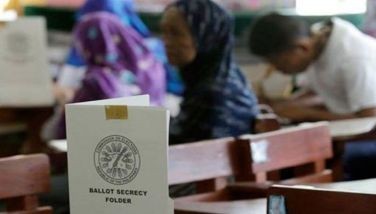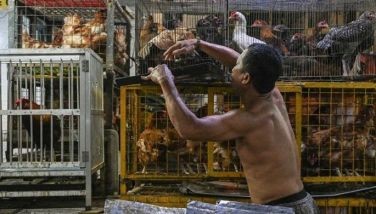Spate of attacks alarms local Indian community
(First of two parts)
When Raj Singh smiles, you will want to pay him, even if you don’t owe him money. The polite 28-year-old Indian knows his way with Filipinos, especially with those he has to deal with in his money-lending business, an informal financing scheme called “5-6” that Indians in the
Left with relatives in
Singh says business has been good, echoing many other Indians in his line of work. Yet he is now thinking of leaving the
News of the attacks have also reached Indian communities in other countries, where these have not only led to statements of concern, but also raised tensions between Indian and Filipino expatriates. In
For sure, such reactions can be traced largely to inaccurate reports, such as one by an Indian newspaper that said as many as 100 Indians were killed in the
Advisory
N.S. Kalsi, Commissioner of Non-Resident Indians Affairs in
The Philippine National Police (PNP) admits its records are inaccurate and thus do not match those of the Indian authorities. Still, police records and news reports strongly indicate that attacks against Indians are indeed on the rise, and range from holdups to kidnapping to outright ambushes, and occur even outside of Metro
Police records alone show that in 2005, there were only three crimes against Indians, but the figure shot up to 13 in 2006. From January to June 2007, the PNP had already recorded eight cases with Indians as victims.
Local authorities agree with some Indian nationals that the killings especially may have been masterminded by fellow Indians against business rivals. The Indian government itself says that some Indians have joined the ranks of Chinese and Filipinos involved in kidnapping and extortion, which may help explain the sudden spike in the cases of ambushes and abductions of Indians. But no one doubts that Filipinos have been the perpetrators in several of the attacks.
“Many families are being destroyed,” says Bhagwant Rai Bansal, president of Khalsa Diwan Inc., the oldest and largest Indian organization in the
Those into 5-6 are the usual victims, and the Indians interviewed for this story say they are easy targets. One can spot them on any crowded street or market, riding motorcycles and with backpacks, sometimes carrying umbrellas, towels, and home appliances that they sell. Worse, their daily schedule is predictable.
Just two weeks ago, a 50-year-old Indian moneylender was attacked in Raj Singh’s neighborhood. Two Filipinos approached the Indian in broad daylight, drew a gun, and announced a holdup. One of the men then tried to grab his cell- phone while the other concentrated on his backpack while kicking him. The moneylender was able to run even as one of the men fired the gun at him. The gunman missed and fled, but his accomplice was pounced upon by local residents, who splashed hot water on his back.
In an earlier incident, also in
Police records show similar incidents have been occurring in Zambales, Bulacan, and Nueva Ecija. There have also been kidnappings of Indians, with ransoms ranging from P60,000 to P200,000; in one case in Isabela, the ransom even reached P2 million. According to the police, the number of kidnapping cases in the first four months of 2006 rose by 70 percent compared with the same period in 2005. Most of the abductions, it said, were of Indians involved in money lending.
Then there are the assassinations, which police suspect are being done mostly by a particular group of Indians against business competitors. Some members of the Indian community here say about seven separate ambushes attributed to the group resulted in six dead victims. The seventh target, who survived, is now receiving death threats.
Police inattentive?
The Indian embassy in the
In
But Indians in this country sound less convinced, largely because they know many of the crimes against members of their community usually go unresolved. Of the 24 crimes (robbery, holdup, kidnapping, stabbing, murder, etc.) against Indians that appear in PNP records from 2005 to June 2007, 15 remain unsolved, with the suspects still at large.
When asked why a majority of the cases are still unsolved, the police replied they usually operate based on priorities.
But one high-ranking police official exclaimed when he saw the list involving Indian victims: “P__ ina, napabayaan ito, ah (Son of a bitch, this was not attended to)!” He has since issued a directive for the cases to be followed up.
In fact, the official was even looking at an incomplete list, since several Indian victims are apparently illegal aliens and thus refrain from filing complaints. Yet even those with proper documents say they would not bother to go to the police since, they say, they will not be given much attention anyway.
“If you complain, the police tells you, ‘Siguro marami kang pera, buhay ka naman, alis ka na’ (Maybe you have a lot of money. But you’re alive, so get out of here),” says one Indian resident in
The Indian community in the
Writer Anita Raina Thapan says both Sindhis and Punjabis arrived in the
Official data, meanwhile, show that many Indian migrants were enticed to register in the mid-1990s (from 503 in 1994 to 3,141 in 1995), partly because of the implementation of the Alien Social Integration Act, which allowed those considered as “illegal aliens” to be granted legal residence status. There was another surge in registration in 2001 up until 2003, with a majority of the applicants granted temporary resident visas. But last year, only 110 Indian nationals bothered to register with the immigration bureau. Some observers say that may have been because of the attacks, but the BI says the decline in registration may be partly because most already shifted to the I-card, an electronic card that replaced the paper-based Alien Certificate of Registration.
Interestingly, the number of Indian arrivals increased from 26,894 in 2005 to 28,824 in 2006, or a rise of seven percent.
(To be concluded)
- Latest
- Trending

































